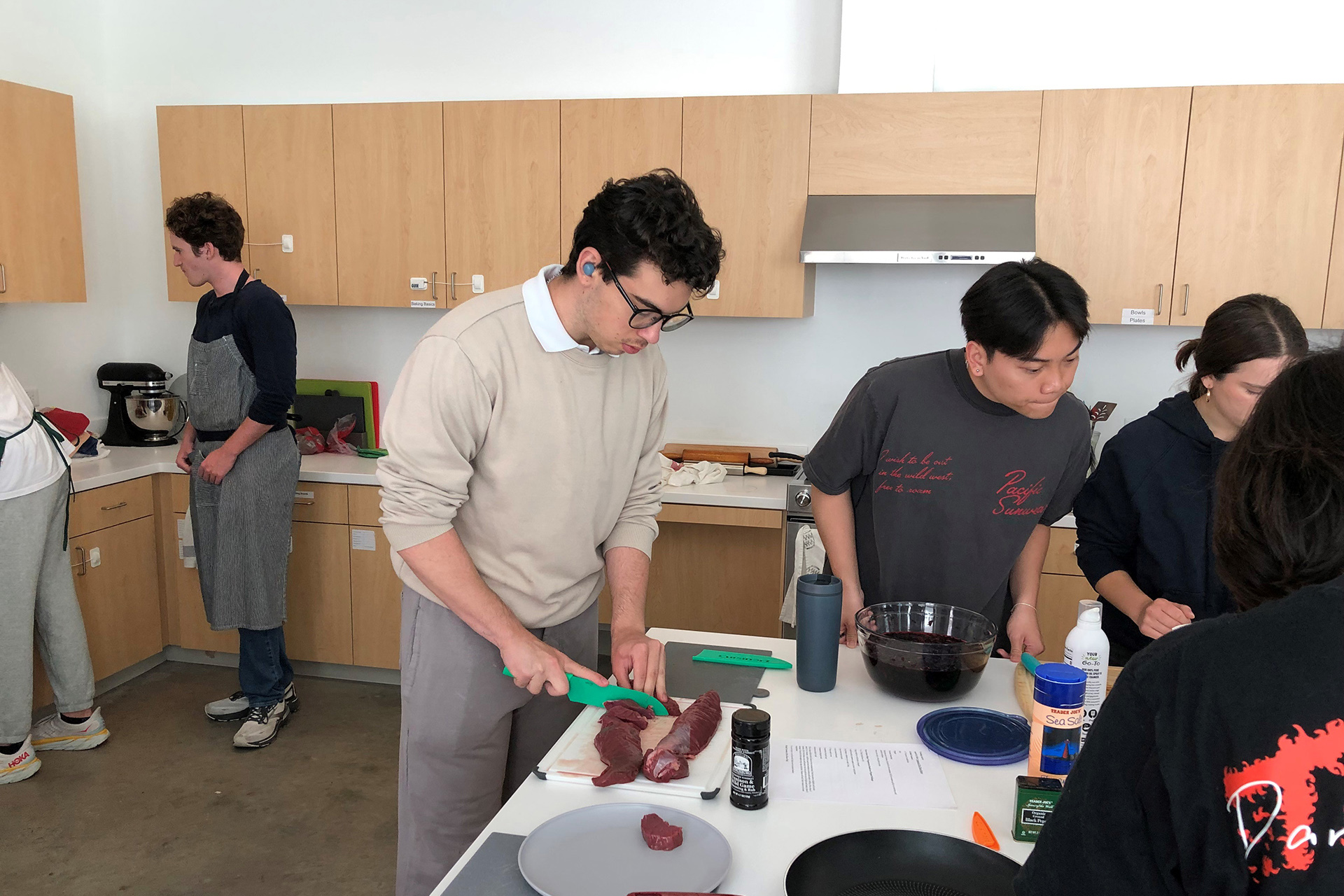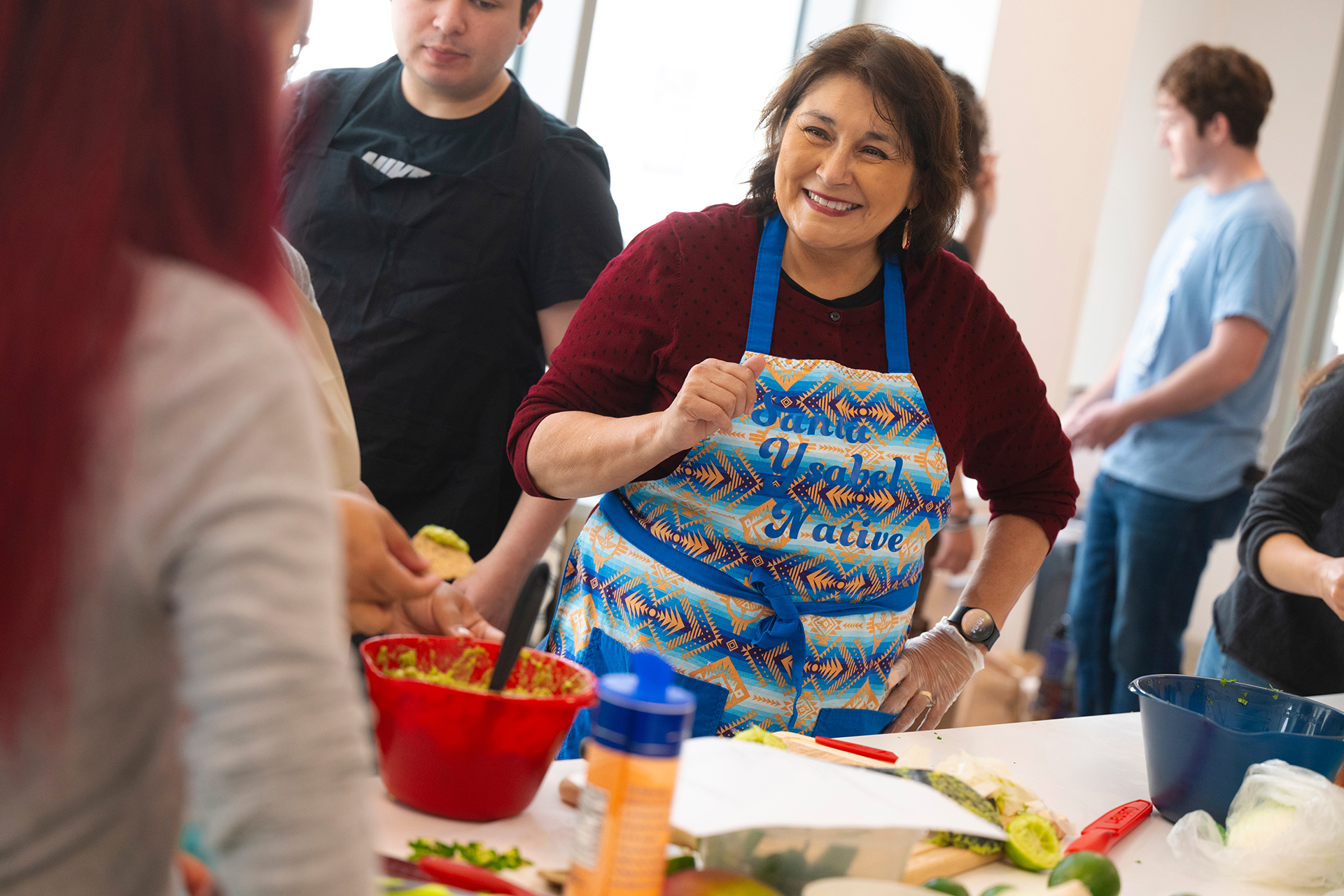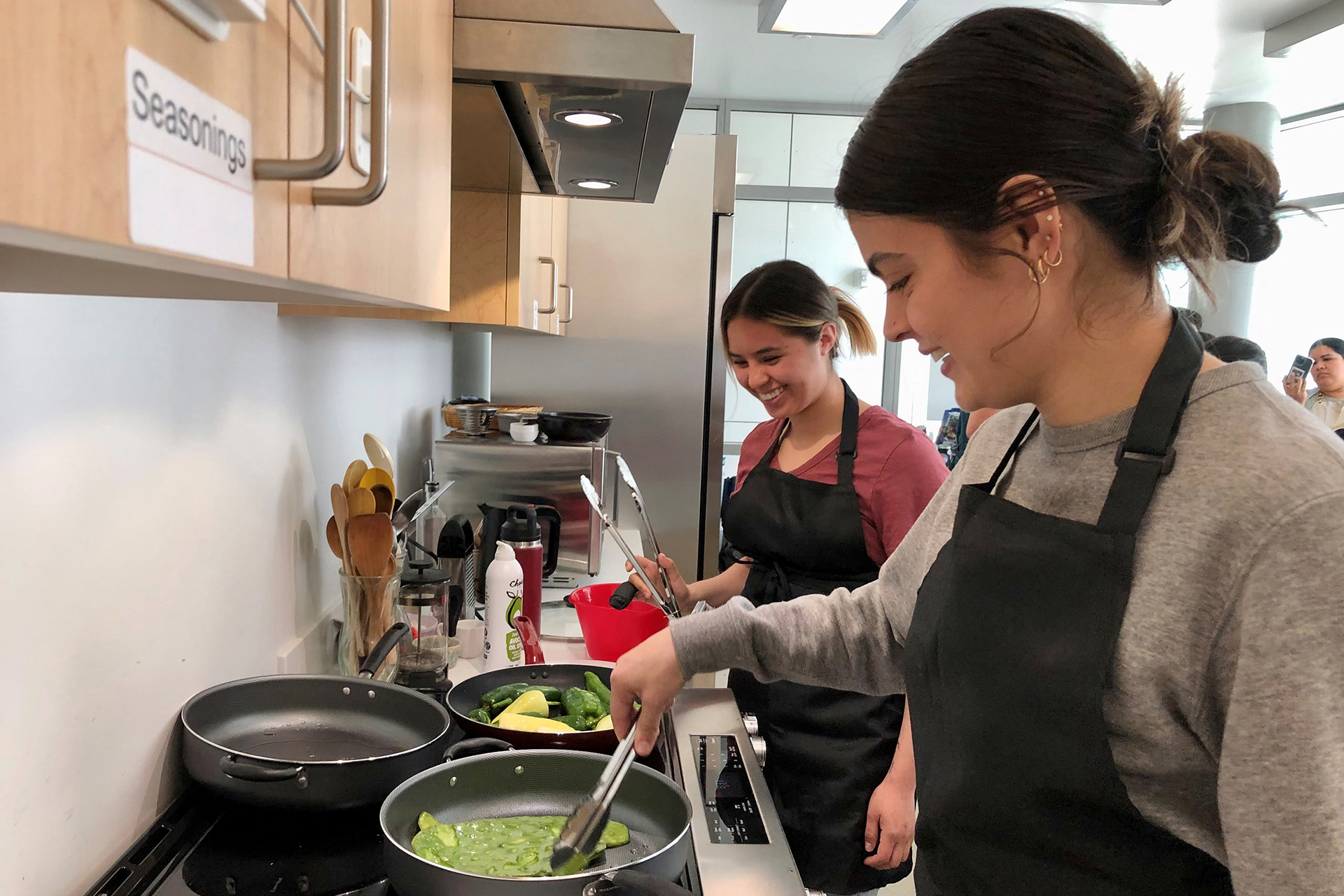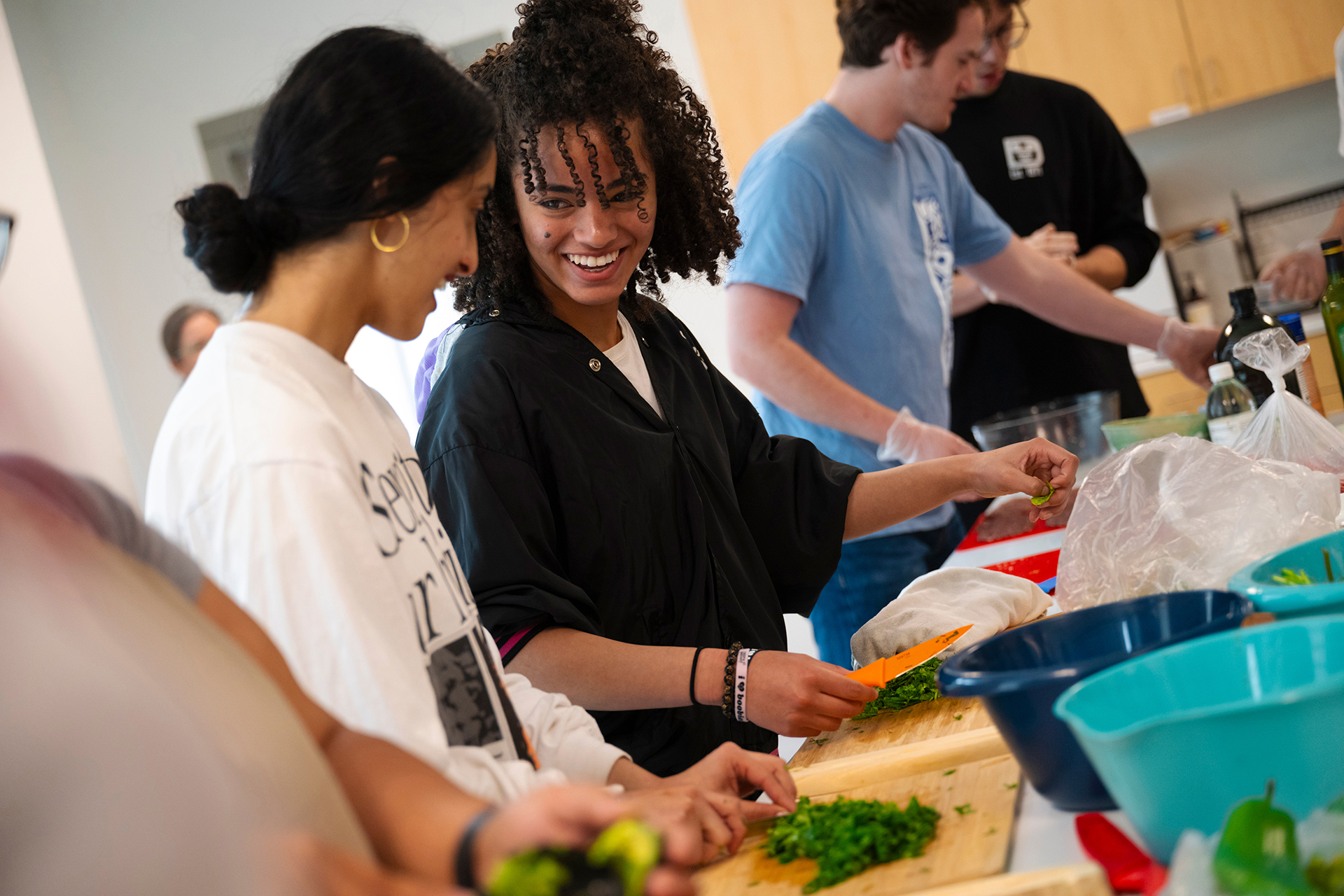Cooking Up Community Through Indigenous Foods
Story by:
Published Date
Article Content
Menus often celebrate exotic flavors and far-flung cooking styles, but are you aware of ingredients and recipes used by the people indigenous to our country? A UC San Diego course, Food Justice and Indigenous Food Sovereignty, explores the relationship between food, culture and ecology, in particular the contribution of Indigenous foods, through readings, expert guests and a cooking lab at the Craft Center.

The creator of the course, Professor Heather Ponchetti Daly, is a tribal member of the Iipay Nation of Santa Ysabel, part of the Kumeyaay Nation, which extends from San Diego and Imperial counties in California to 60 miles south of the Mexican border.
“Food is central to our lives—a basic human need imbued with political, economic, ecological and cultural meanings,” said Daly, who is in the Environmental Studies department of Muir College. “Whether we think about it or not, one of the most fundamental ways that we interact with the natural and social world every day is through the food we eat.”
Daly became a Changemakers Faculty Fellow in 2023. Her project, focused on the creation of an Indigenous Food Laboratory, was inspired by the course. “Within environmental studies I also teach environmental law, federal Indian policies and Indigenous approaches to climate change,” she said. “I created the class because I realized that concerns about the environment always circled back to food. But I did not realize it was my passion until I really jumped in with both feet.”

Historically, many of the world’s foods originate and have been adapted by Indigenous peoples and were the basis for thriving local economies and trade networks. The course explores environmental stewardship techniques and agricultural innovations that provide plants and animals for sustainable health.
“The subject appealed to me because I am interested in how communities adapt to the food sources around them—or what they are provided—and how those adaptations can become or influence the culture,” said Trishawna Hyatt, a third-year student from Seventh College studying Environmental Policy. “As far as the environment, a lot of cultures have knowledge that is overlooked on how they used to treat their land and resources in ways that benefit nature.”
During the course, students participate in five cooking labs, where only North American indigenous foods are used—meaning, no wheat flour, no dairy and no beef. “So we will not break bread in the lab, so to speak, but rather break Shawii (acorn mush),” Daly laughed.

In addition to foraged acorns and crabs provided by guests from Scripps Institution of Oceanography, the course includes ingredients like the “three sisters,” or corn, beans and squash. Students in one food lab created a meal featuring grilled venison. Another food lab brought an indigenous twist to a familiar favorite, with a menu including bison chili, tacos and salsa.
“Besides cooking, I enjoy learning about the backstory of recipes and how different cultures influence cooking styles,” said Zahira Alatorre, a third-year student from Warren College studying Sociology. “For example, one of the dishes we are making is a nopales (cactus) salad. Coming from a Mexican background, discovering alternative ways to prepare it adds an intriguing perspective to my culinary experience.”
As part of the class, healthy, whole foods are served along with thinking more critically about the impact of the food we eat. “All of us have stories about food and about how food is important to our identity and culture,” shared Daly. “Well beyond nutrition, there are so many rich stories that we can glean from talking about food and how it affects us.”

Erica Ruiz is a fourth-year student from Thurgood Marshall College majoring in Ethnic Studies with a minor in Native American and Indigenous Studies. Her grandfather is from the Wixárika (Huichol) people, indigenous to Mexico. Ruiz has always sought to understand her roots and connect to her ancestry, but she has also found that cooking has created a special bond with her classmates.
“During lecture, it’s much harder to connect to my peers because we’re trying to intake as much knowledge as possible, but I’ve learned about my classmates’ lives while cooking food together,” she said. “It’s just a reminder—food is life.”
Recipe for Oysters Ahun (good oysters)
Courtesy of Heather Ponchetti Daly, Eva Trujillo and Alexandra Hunter.
Ingredients
12-24 oysters (reserve the liquid)
16-24 oz. Miner’s lettuce or watercress
1-2 shallots
1 bunch green onions
1 bunch dill
1 bunch parsley
1-2 cups blue corn meal, toasted
1 lemon (optional)
Instructions
Shuck all of the oysters, reserving the liquid.
Toast corn meal in avocado oil until fragrant—set aside.
Finely chop the lettuce or watercress.
Finely chop shallots, green onions, dill and parsley.
Mix together the shallots and green onions, put into an avocado oil coated pan over medium heat. Cook until reduced and fragrant.
Mix together chopped lettuce (or watercress), dill and parsley—add to the pan.
Add the liquid from the oysters to the pan, cook until reduced (5-7 minutes).
Put oysters on a cooking sheet. Place a spoonful of the cooked vegetables and herbs on top of each oyster along with a spoonful of toasted corn meal.
Place in the oven or grill for 10-15 minutes.
Serve hot, with a squeeze of lemon on top.
Share This:
You May Also Like
Stay in the Know
Keep up with all the latest from UC San Diego. Subscribe to the newsletter today.



